Delicious Oat Flour Chocolate Chip Cookies
By Angela Bates A Recent ASU Nutrition Student
For someone with dietary restrictions, like celiac disease sufferers, food can be a sad experience. Imagine no longer being able to bake and eat your favorite chocolate chip cookies anymore, but everyone in your family can. Remembering the delicious crisp edges, melty chocolate chips, and chewy sweet center… You could cry.
Well, sometimes, you just have to kiss a hundred toads to find your prince and sometimes, you have to bake a hundred gluten-free friendly recipes to find one that’s not only edible but delicious. Let’s not forget how expensive gluten-free baking is. The flour can be upwards of $10 per pound, depending on the mixture, so a single recipe can set you back quite a bit.
Luckily for anyone who cannot have gluten, or for those of you who just really love getting fiber in any way possible, my tests have presented a winner. A not-cloyingly-sweet, fiber-filled, easy-on-the-wallet knockout of a cookie that you can feel at least a bit better about eating!
The base of these cookies is oat flour, which can be purchased, but at about double the price of making it yourself. Using a food processor or blender, you can simply put the same amount of quick cook oats or old-fashioned oats in and blend until fairly fine. It will be a bit more coarse than normal wheat flour, but the final product will still be great. I always remeasure my oat flour to be sure it’s the right amount after blending and adjust a bit if needed.
The salt can be adjusted to your own preference or based on the type of chocolate your chips or chunks are. For a more dispersed chocolate effect, try mini chips! The resting of the cookie dough is kind of non-negotiable, so do not skip that! I make my dough in the evening and leave it overnight for best results! You may try dairy free butter substitutes, but due to the crumbly nature of gluten-free baking, replacing the egg may have bad results. On to the main event!

Oat Flour Chocolate Chip Cookies
Yields approximately 2 dozen 2-inch cookies
Ingredients:
1 stick plus 2 tablespoons (10 TBSP) unsalted butter, softened
1/2 cup brown sugar, packed
1/4 cup plus 1 tablespoon white sugar
1 egg, room temperature
1 1/2 teaspoons vanilla
2 1/2 cups oat flour (certified gluten-free if needed)
1/2 teaspoon baking soda
1/2 teaspoon salt
1/4 teaspoon cinnamon
10 ounces of chocolate chips
Instructions:
Cream butter and sugars together until very smooth. Add egg and vanilla and beat until fluffy. Combine oat flour, baking soda, salt, and cinnamon and mix well.
Stir dry ingredients into wet. The mixture will be firm and sticky. Add in chocolate chips and stir to combine.
Cover the dough in the bowl and refrigerate for at least 2-3 hours, up to 24.
Preheat oven to 350℉
Place rounded tablespoons of dough onto a parchment-lined baking sheet.
Bake for approximately 9-10 minutes or until edges is golden.
To avoid crumbling, let sit on cookie sheet 5 minutes before moving to a wire cooling rack for 15 minutes.
Enjoy!
Looking for more recipes? Check out the Fill Your Plate recipe section. If you liked this article, then you will love the Fill Your Plate blog.
Cauliflower- the Cruciferous Superfood
By Morgan Crawford a Recent ASU Nutrition Student
I think many people would look at cauliflower in the market or grocery store and pass it by, thinking it’s just another boring vegetable. Even I used to be a skeptic. This plain, white vegetable looks quite uninteresting at first glance, but if you give it a chance, I assure that you will fall in love with is just as I have!
In the early 16th century, cauliflower was first found in Cyprus, where it was then grown in France and Italy. It was in the late 1800s that this crop was brought to the United States, where it was planted in Margaretville, New York. This vegetable is really taken for granted today, seeing as it is grown year-round and is readily available in nearly all grocery stores, but in the early years of its growth and harvest, it was considered a prized crop to many.
Cauliflower belongs to the Cole family, which include broccoli, kale, and cabbage. In German, Cole means cabbage. These mighty crops are also referred to as cruciferous vegetables, which contain sulfur compounds that are known as glucosinolates.
Though the cauliflower we see and the purchase is most commonly white, this vegetable actually has over one hundred varieties with some that are quite colorful. Because cauliflower is in the same family as broccoli, cabbage, and kale, some varieties are a combination, such as Romanesco Broccoli, which looks more like cauliflower but is green and spiky. Another variety known as purple cauliflower gets its color from an antioxidant known as anthocyanins. Lastly, we have an orange variety that contains high levels of vitamin A.
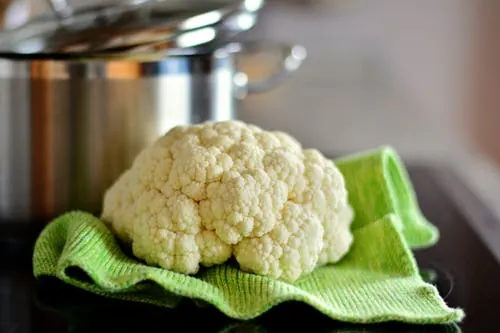
Many of us tend to overlook cauliflower when choosing our vegetables, but it actually has quite a wide range of health benefits. Natural health physician, Dr. Mercola provides the top 8 health benefits of this cruciferous vegetable:
- Cancer-fighting
Sulforaphane is a compound found in cauliflower that has been shown to prevent cancer. It also has an antibacterial component that aids in these processes. Additionally, sulforaphane increases liver function and reduces inflammation.
- Heart health
The same compound, sulforaphane improves overall blood circulation, which leads to better heart health.
- Anti-inflammatory
Even though a small amount of inflammation in the body is actually beneficial for fighting off infection, viruses, and bacteria, chronic inflammation can cause irreversible damage, as is seen with arthritis. Cauliflower has several components that reduce inflammation including indol-3-carbinol, a phytonutrient that is present in cruciferous vegetables.
- Vitamins and minerals
As for vitamins and minerals, this vegetable packs a powerful punch! The most concentrated vitamin found in cauliflower is vitamin C. In just one serving, it has over 75% of the daily recommended amount. Other vitamins and minerals include manganese, potassium, phosphorus, vitamin K, and several B vitamins.
- Brain health
This aspect of health is sometimes overlooked, but it is so vital to every other system in the body. Choline is a type of B vitamin that plays a huge part in the development of the brain. It aids in the creation of DNA and also increases nerve communication.
- Detoxifying
The body has naturally occurring processes of detoxifying, which are enhanced when we consume foods that are high in compounds that promote these processes. Cauliflower contains glucosinolates, which are sulfur compounds that promote the release of enzymes that then detoxify the body.
- Digestive benefits
Dietary fiber is incredibly important for digestive health, but unfortunately, most people don’t consume an adequate amount in their diet. Two cups of cauliflower contain more than 4 grams of dietary fiber, which is around 17% of the daily recommended amount. This makes it an excellent source of fiber that will contribute to an overall healthier digestive system.
- Antioxidants
Free radicals are toxic compounds that are released in the body during the digestive process, breathed in from the air, and even from sunlight interacting with skin cells. Though these compounds are hazardous to our health, there are other substances called antioxidants that combat their negative effects. Antioxidants are capable of neutralizing free radicals, which prevents certain cancers, heart disease, and even slows the process of aging.
With so many options for preparing and cooking cauliflower, this vegetable really proves to be a rather versatile food. To prepare cauliflower, cut away the leaves with a paring knife and separate the head into small florets. From there, you have some options for cooking. My favorite method is to coat the florets in a small amount (1-2 tablespoons) of olive oil, add salt, pepper, and garlic powder, and roast in a 400-degree oven until the edges are crispy- this will take about 25-30 minutes. Another option is to puree the cauliflower. This method of preparation creates a creamy texture that resembles mashed potatoes, but with fewer calories, and significantly higher levels of vitamins and minerals. Follow this easy recipe for garlic mashed cauliflower.
I also found an awesome recipe for sweet and spicy cauliflower. This works well as a side dish or mixed with other vegetables and rice or quinoa for a hearty stir fry. Here is the recipe for sweet and spicy cauliflower!
Ingredients:
4 cups cauliflower florets
2 tablespoons maple syrup
2 tablespoons sriracha
2 tablespoons olive oil
½ tablespoon soy sauce (use tamari if gluten-free)
½ teaspoon black pepper
Instructions:
- Preheat oven to 400 degrees.
- Line baking tray with parchment paper.
- Combine all ingredients in a large mixing bowl and stir until cauliflower is well coated.
- Pour onto baking tray and place in the oven.
- Cook for 30 minutes or until tender.
For more fun articles like this check out the Fill Your Plate Blog. Looking for some fun recipes to try for the family check out our recipe section.
The Vitamin Question: Should you be giving your children daily vitamins?
By: Cecelia Wilken a Recent ASU Nutrition Student
My toddler is a picky eater. While my spouse and I work hard to put balanced meals on her plate, getting her to eat them is another story altogether. Nervous about her nutrition and whether she was getting the nutrients she needs to grow, I started giving her daily multi-vitamins. My parents gave them to me when I was a kid, so I didn’t question myself when I started giving them to her.
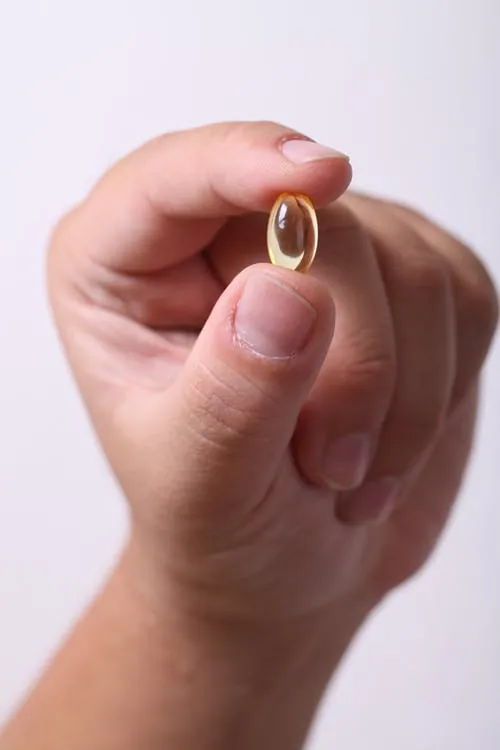
But the more I thought about it, the more I wondered, were they even necessary? Did I really need to be giving my daughter daily vitamins? Did she need them? Could giving her vitamins be detrimental to her health? After all, she was healthy, strong and vibrant without taking vitamins. So maybe my worries were unjustified.
Because children are constantly growing, a lot of their nutritional needs differ from adults. Here is a list of some of the vital nutrients that children need:
CALCIUM
Calcium is a fundamental building block for growing children, especially when developing strong bones and teeth. According to national surveys, most children over 8 years fail to meet the daily recommended intake of calcium. This can lead to an increased risk of fractures and osteoporosis later in life.
Daily recommendations for calcium:
- Ages 1-3: 700 milligrams (mg) of calcium daily.
- Ages 4-8: 1,000 mg daily.
- Ages 9-18: 1,300 mg daily.
Adolescents are especially vulnerable to inadequate intake of calcium. During the ages between 9-18, about 40% of lifetime bone mass is accumulated. Studies have found that for adequate bone mass to develop, consistent and sufficient calcium intake is needed. On and off supplementation has been found to fail to provide long-term benefits. These findings have emphasized the importance of developing healthy and balanced dietary habits early in life.
Calcium can be found in a lot of different foods, not just in dairy products. Many foods are fortified with calcium, like bread and pasta. Salmon and dark green vegetables like spinach and kale are also excellent sources of calcium.
VITAMIN D
Vitamin D works hand in hand with calcium, playing a vital role in calcium absorption. Simply put, it doesn’t matter how much calcium you intake if you don’t have adequate levels of Vitamin D. Vitamin D is found in some foods, but is mostly obtained from sun exposure.
Daily recommendation of Vitamin D:
- Age 0-1: 400 micrograms (IU/mcg) of Vitamin D daily
- Ages 1-13: 600 mcg daily
- Ages 14-19: 600 mcg daily
Very few foods contain naturally occurring Vitamin D; fatty fish such as tuna, salmon and mackerel and fish liver oils contain the highest amounts. Small traces of vitamin D can be found in beef liver, cheese and egg yolks, but the majority of the Vitamin D provided through the American diet is found in fortified foods like milk and ready-made cereals.
Due to the varying factors effecting UV exposure (cloud cover, smog, skin melanin content, the use of sunscreen etc.) it is difficult to determine general guidelines for sun exposure. Some researchers suggest that “5–30 minutes of sun exposure between 10 AM and 3 PM at least twice a week to the face, arms, legs, or back without sunscreen usually lead to sufficient vitamin D synthesis.” Individuals with limited sun exposure need to consider including Vitamin D rich foods into their diet.
VITAMIN E
Vitamin E acts as a fat-soluble antioxidant and is involved in helping maintain a healthy immune system. Vitamin E deficiencies are extremely rare within the population and are only seen in extreme cases of malnutrition or in correlation to specific diseases and disorders.
Daily recommendations for Vitamin E:
- Ages 1-3 need 9 IU of vitamin E daily.
- Ages 4-8 need 10.4 IU daily.
- Ages 9-13 need 16.4 IU daily.
- Teens need as much as adults: 22 IU daily.
Vitamin E is found naturally in abundance in nuts, seeds and vegetable oils, but are also found in dark leafy greens and fortified foods like cereal. Most Americans get their Vitamin E in the form of vegetable, canola and soybean oils that are found in processed foods.
B VITAMINS
Vitamin B12 (cobalamin), vitamin B3 (niacin), vitamin B6 (pyridoxine), and vitamin B2 (riboflavin) are essential vitamins that help support a healthy metabolism, provide energy, support heart health and a healthy nervous system. Of these, the most important is B12. Vitamin B12 is required for healthy red blood cell formation, proper brain and nerve function and DNA synthesis.
Daily recommended intake of Vitamin B12:
- Babies: about 0.5 micrograms daily.
- Toddlers: 0.9 micrograms daily.
- Ages 4-8: 1.2 micrograms daily.
- Ages 9-13: 1.8 micrograms daily.
- Teens: 2.4 micrograms daily (2.6 micrograms for pregnant teens
Vitamin B12 is found naturally in animal-based products like meat, poultry, fish and eggs. Since Vitamin B12 is not found in plant-based foods families who are vegetarian, or vegan may need to supplement Vitamin B into their diets. Children who also struggle to ingest meat on a regular basis may also need to supplement in order to achieve adequate levels.
IRON
Iron is another vital nutrient needed in the body. It plays a vital role in helping oxygenate blood, aids in metabolism, and is needed for adequate growth, development, normal cellular functions. Additionally, it aids in the synthesis of some hormones. While most people in the U.S. achieve adequate intake of iron through their diets, young children are susceptible to deficiencies. Since iron deficiencies are usually correlated to malnutrition, blood loss, and hereditary disorders it is possible that people with iron deficiencies will also have other nutritional deficiencies.
Daily recommendations for iron:
- Age 0-6 months: 0.27 mg
- Age 7-12 months: 11 mg
- Age 1-3 years: 7 mg
- Age 4-8 years: 10 mg
- Age 9-13: 8 mg
- Age 14-18: 11-15 mg
It should be noted that vegetarians require 1.8x more iron than those who eat meat in order to account for the differences in plant-based iron. Iron from plant-based sources is absorbed differently and carries oxygen differently than meat-based iron. As a result, vegetarians and vegans should consider supplementing iron into their diets. Additionally, as females grow up they require higher levels of iron intake than males.
Iron is found in many different foods. The richest sources come from lean meat and seafood, but it is also found in nuts, beans, vegetables and fortified grain products (like cereals). Breastmilk has enough iron in it to supply infants up to 4-6 months.
FIBER
While fiber is not a mineral or vitamin is a vital and necessary part of a balanced diet, especially in children. Foods that are rich in fiber often contain high level of other essential nutrients. To help maintain a growing, healthy digestive system, children need just as much, if not more, dietary fiber than adults. Fiber is found in high amounts in foods like broccoli, avocado, oatmeal, berries and beans.
Daily recommendations of fiber:
- Ages 1-3: 19 grams
- Ages 4-8: 25 grams
- Ages 9-13: 26-31 grams
- Ages 14-18: 26-38 grams
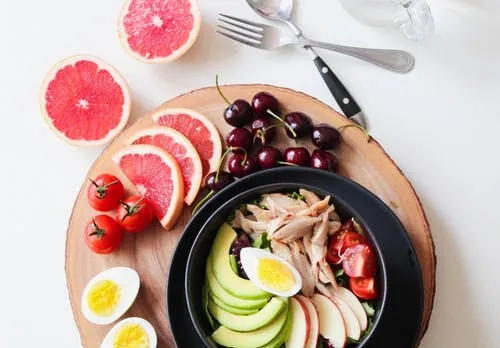
SOME IMPORTANT CONSIDERATIONS
- “Natural” does not always mean safe. For example, there have been reports of babies harmed after taking homeopathic sleeping/teething gels and tablets. The FDA is currently investigating such claims and reported against the use of these products in 2016. https://www.fda.gov/NewsEvents/Newsroom/PressAnnouncements/ucm523468.htm
- Federal regulations are less strict on dietary supplements than prescriptions or over-the-counter drugs. Ask your pediatrician for recommendations on dietary supplements before giving them to your child.
- Some dietary supplements are not in child-safe packaging. To avoid any accidents, make sure all medications and supplements are in child-safe packaging and are kept out of reach.
- Dietary supplements might interact negatively with prescription medications, or cause side-effects of their own.
- Follow the directions. Over supplementation can lead to potential problems such as vitamin toxicity.
TO SUPPLEMENT OR NOT TO SUPPLEMENT?
Like I mentioned before, my own daughter is picky, despises vegetables and rarely eats meat. I was worried about her and wondered if I needed to give her vitamins. After consulting with her pediatrician, they recommended putting her on a daily multi-vitamin and urged me to keep encouraging her to eat balanced meals. They told me that until she started eating more balanced meals regularly that supplementation of a daily multi-vitamin would be beneficial to her health. They even provided me with a prescription for a daily multi-vitamin for her.
So, should you give your own kid(s) vitamins? This is a great question! And the answer lies with your child. Is your child an extremely picky eater? Do they have access to a well-balanced diet? Are they thriving, energetic and growing well? If your child eats a well-balanced diet, likes their vegetables (lucky you!) and continues to thrive, then they might not need to take vitamins. Most doctors and professionals recommend that children (and adults!) try to get their vitamins and minerals right from their food. A well-balanced and varied diet will often be able to supply all the necessary nutrients in more than adequate levels.
For more information on vitamins check out these articles!
https://fillyourplate.org/importance-vitamins-early-stages-life/
https://fillyourplate.org/say-jell-o-vitamins/
https://fillyourplate.org/importance-vitamin-k/
https://fillyourplate.org/early-vitamin-supplement-reduce-infant-mortality/
*** Before giving your child any sort of supplementation, consult your family pediatrician to discuss your options and concerns first. Information about nutrients retrieved from the U.S. Department of Health & Human Services and the National Center for Complementary & Integrative Health.
References
Greer, F., Krebs, N. (2006) Optimizing Bone Health and Calcium Intakes in Infants, Children &
Adolescents. Pediatrics, 117(2), 578-585. doi: 10.1542/peds/2005-2822
American Heart Association (2015). Fiber and Children’s Diets. Retrieved from
http://www.heart.org/HEARTORG/HealthyLiving/HealthyEating/Nutrition/Fiber-and-Childrens
Diets_UCM_305981_Article.jsp#.W-3f6-hKhPY
Shaw, G. (2018). Vitamins and Minerals for Children: Calcium, Vitamin D, and More. WebMD. Retrieved
from https://www.webmd.com/health-insurance/features/family-vitamins#1
U.S Department of Health & Human Services (2018). 10 Things to know about dietary supplements for
children and teens. Retrieved from: https://nccih.nih.gov/health/tips/children
U.S Department of Health & Human Services (2018). Iron: Fact Sheet for Health Professionals. Retrieved
from https://ods.od.nih.gov/factsheets/Iron-HealthProfessional/
U.S Department of Health & Human Services (2018). Vitamin B12: Fact Sheet for Health Professionals.
Retrieved from https://ods.od.nih.gov/factsheets/VitaminB12-HealthProfessional/
U.S Department of Health & Human Services (2018). Vitamin D: Fact Sheet for Health Professionals.
Retrieved from https://ods.od.nih.gov/factsheets/VitaminD-HealthProfessional/
The Squeeze on Citrus
By Angela Bates A Recent ASU Nutrition Student
4 Ways One of Arizona’s Top Crops Benefits the Body
In 1889, William J. Murphy planted an experimental citrus grove along the newly completed Arizona Canal. At this time in history, it was known that citrus could prevent scurvy, so the miners in Arizona were seeking the fruits to keep the disease away. To Arizona’s advantage, the citrus fruits ripened before California’s crops, making them available first. At its peak in the 1970s, citrus farming covered 80,000 acres of the state, but urban development has cut that to the modern day 20,000 acres. Arizona is one of only four states that produce citrus in the United States, but that’s not the only reason this food is important. It can be a lifesaver.
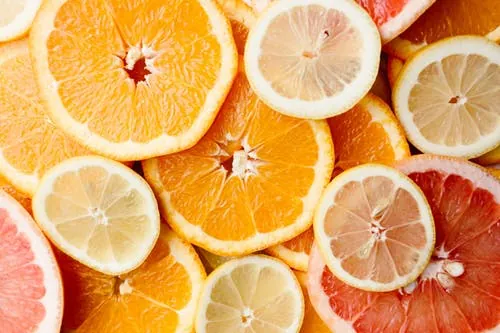
The benefits of citrus became apparent in the 17th century, but it was a mystery as to why it was so effective at preventing or curing disease. Sailors sent out to sea for months at a time died of scurvy or came back weak and could not recover. Through dosing of citrus fruits, James Lind, a Scottish naval surgeon, was able to turn around the fate of sailors. Over the next 200 years, scientists discovered vitamin C and found it was the factor preventing collagen breakdown in humans. There are numerous benefits to citrus fruits beyond preventing scurvy and i citrus season in Arizona is a special time.
- Major Antioxidant Activity:
Vitamin C, Carotenoids beta-carotene, lycopene, lutein, polyphenols, terpenes, and flavonoids, among other phytochemical antioxidants are found in citrus fruits. These antioxidants not only boost the immune system, they also may protect the body from cancer, heart disease, infection, memory issues, arthritis, diabetes, and more. According to Dr. Katrine Baghurst of Commonwealth Scientific and Industrial Research Organization in Australia, numerous studies seem to support these claims.
Vitamin C plays a key role in the formation of collagen, which is the main component of connective tissue in the body. Without adequate collagen synthesis, the gums cannot hold teeth, blood vessels and bones weaken, tendons and ligaments tear easily, and wounds are slow to heal. Vitamin C can prevent anemia due to its ability to aid in iron absorption. A single medium orange can supply approximately 85 percent of your daily C!
- Dietary Fiber Supply:
You are most likely already familiar with the importance of dietary fiber, but did you know that citrus fruits contain pectin? Pectin is a non-starch polysaccharide, a type of carbohydrate, and a fantastic form of fiber. Other than preventing colon cancer, pectin holds nutrients in a gel in the stomach to slow digestion and absorption. This helps you feel full longer, process glucose slower to prevent blood sugar spikes, and absorb nutrients better. Dietary fiber is also known to affect blood cholesterol levels, which may prevent heart disease. According to the United States National Academy of Sciences, the average intake of dietary fiber is only 15 grams, but a medium orange can provide 3 grams alone, so consider adding an orange as a snack or part of a meal to take advantage of pectin.
- Full of Folate:
Any woman who has ever been pregnant can tell you that folate, known as folic acid in its synthetic form, is extremely important during fetal development. Not getting enough folate during pregnancy could result in neural tube (spine and brain) defects in the fetus and preterm birth. It may also prevent congenital heart disease and oral clefts. Getting enough folate can also prevent anemia in a pregnant mother. Folate is important for everyone else as well.
Folate is a B vitamin, so it is water soluble and needs to be consumed daily to keep levels appropriate. Folate deficiency will cause anemia as folate is necessary to produce red blood cells. According to Johns Hopkins, megaloblastic anemia can also occur with folate deficiency, meaning the red blood cells become large, fewer in number, and die faster. Citrus fruits provide a great source of folate. The form of folate is also important as some people with a genetic mutation of the MTHFR enzyme have trouble utilizing “folic acid,” which is the form frequently found in multivitamins and enriched foods. James A. Greenberg of Harvard Medical School believes that approximately 60 percent of the population has moderate issues with MTHFR and up to 25 percent have very poor folate metabolization. With natural sources of folate, rather than using folic acid, our bodies may better absorb and use this vitamin. Citrus fruits provide anywhere from 17 to 40 micrograms of folate, up to 10 percent of the recommended daily allowance for an adult.
- So Many Minerals:
After exercising or when your calf keeps cramping while you try to sleep, do you normally reach for a sports drink? Most people know that bananas have a lot of potassium, but not many know that oranges are an excellent source as well. One orange contains about 5 percent of your daily potassium, but a glass of orange juice contains more than 10 percent of your potassium. According to the Florida Department of Citrus, potassium deficiency can cause elevated blood pressure, kidney stones, and osteoporosis. In citrus fruits, potassium and citrate together help keep the acid-base balance stable in the body and may prevent kidney stones. Most Americans do not get enough potassium, but citrus can help you change that.
In addition to potassium, citrus fruits contain calcium, iron, magnesium, phosphorus, zinc, copper, manganese, selenium, and trace amounts of sodium. These minerals all combine to assist in cellular functions in the body. Citrus fruits contain higher levels of minerals than many other common fruits. These minerals, in addition to the high antioxidant levels, help keep your cardiovascular system in great health.
Citrus is one of Arizona’s 5 Cs: citrus, cotton, climate, cattle, and copper. These deliciously sweet and tart fruits are versatile and pack a serious nutritional punch. You may wonder how to best incorporate them into your diet. Although eating the whole fruit is a fantastic way to reap all the benefits, you can add orange sections and garlic to your spinach salad for an Asian inspired vitamin powerhouse. Add whole pieces of citrus to your smoothie for some extra vitamin C and tang. Baked goods like cakes can get a fresh zing from citrus zest and juices, but lemon bars are always a party hit too. If you want to get creative and use pork, which is also in season, why not round it out to full-flavored carnitas and a unique Brazilian “lemonade” to wow your family? Here’s a recipe to get your citrus-filled winter started:
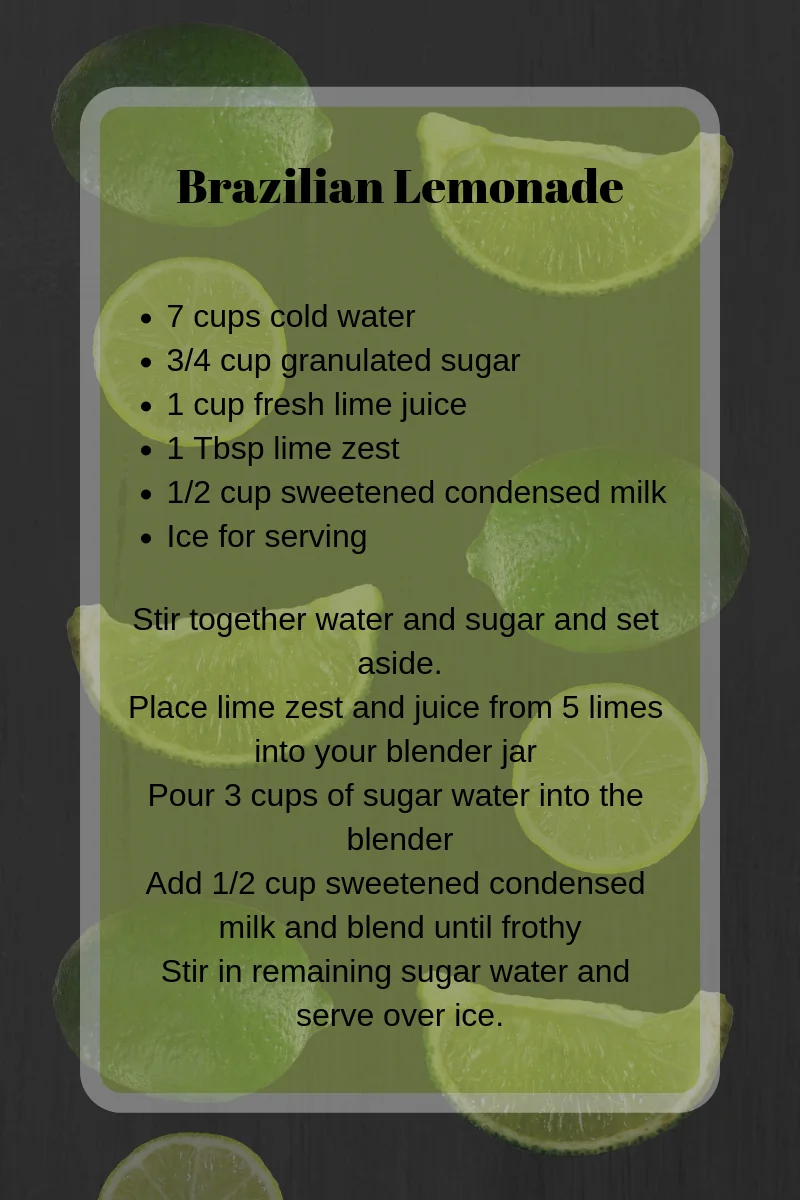
For more articles check out our fill your plate blog. Looking for some fun recipes to make at home? Check out our recipe page.
How to be Healthier with One Simple Rule
By Vanessa Evens a Recent ASU Nutrition Student
One simple easy-to-follow rule that will make each and every one of us healthier sounds too good to be true, right? I promise it isn’t. This one simple rule is dietitian approved and its benefits will bleed into every aspect of your life. Are you ready for it?
It’s called the 50% rule and it really is simple. The 50% rule means that every time you fill your plate, you fill it up 50% full of vegetables. That’s it. No tricks, no restrictions. The goal is simple: eat more vegetables. There’s no calorie counting or math equations with macronutrients, just looking at your plate and seeing that it is half full of veggies. Additionally, you won’t have to worry about if you are getting all the vitamins and nutrients that you need because half of your plate is veggies! They are chock full of all the good stuff that we need every day, that most of us don’t get.

What are the benefits of loading your plates with veggies? According to RD Shawn Wells “Veggies are full of fiber, antioxidants, and beneficial phytonutrients like polyphenols… A diet rich in vegetables can lower blood pressure, reduce the risk of stroke and heart disease, reduce risk of some types of cancer, improve eye health, reduce digestive problems, and have a positive effect upon blood sugar and appetite.” These benefits can make all aspects of your life better. You will have better digestion, more energy, and better blood flow, not to mention the positive effect on your skin, nails, and hair.
It’s a simple rule, but it may be easier said than done. It has been recommended that you should eat around 20 different vegetables a week. That can sound daunting but it doesn’t have to be! Have fun with it. Visit your local farmers market and grocery store and see what is in season, grab a little of everything and experiment! You might find a new vegetable that you love. You can make a big salad, or a big pan of roasted vegetables, or a stir-fry.
Plus, have you ever taken the time to talk to the produce manager of your local grocery store? If they’re around, they can often share worthwhile advice.
I know what you’re thinking…what about when you go out to eat? Well Mia Rigden, a holistic nutrition coach suggests that you skip the entrée portion of the menu and make a meal of veggie sides. She also reminds us that herbs count, as well as veggie, made sauces, like homemade tomato sauce, or pesto. Frozen vegetables are a great option as well if you are short on time. Making this change in your life doesn’t have to be complicated you just have to do it. Your body will thank you, I promise!
Reference:
Laurence, E., & Laurence, E. (2019, April 08). The “50 percent” rule is the easiest way to make every meal healthier. Retrieved from https://www.wellandgood.com/good-food/how-to-eat-more-vegetables-50-percent-rule/
McPhillips, K., & McPhillips, K. (2018, December 20). The 20 veggie challenge makes “eating the rainbow” look like child’s play. Retrieved from https://www.wellandgood.com/good-food/how-eat-more-vegetables/
Meal Prepping for Beginners
By Erin Wyatt a recent ASU nutrition student
Meal prepping has been all the rage over the last few years as a way to maintain a healthy diet. Social media, particularly Pinterest, is littered with pictures of organized refrigerators and tips to make this strategy look easy and appealing. I must admit, I would often scour these pages and envy this tidy and efficient way of preparing food. The authors made it look so simple and achievable.
However, I have never tried it, it’s simply not my personality. I am an impulse food shopper and eater. On Sundays, I do not know what is going to sound good to me on Thursday and therefore would do my shopping almost every day. Enter my first child. I had always heard that parents do not have time to eat, but I never truly believed it until now. For months I would just grab what was easy to eat quickly, which were mostly snacks, or order takeout. These options are not very healthy, nor do they provide nutritious forms of energy to get through the sleep-deprived days. So I have finally crossed over into the world of meal prepping. I would like to share some of my tips for other newbies and how to get the maximum nutritional benefits out of your meals.
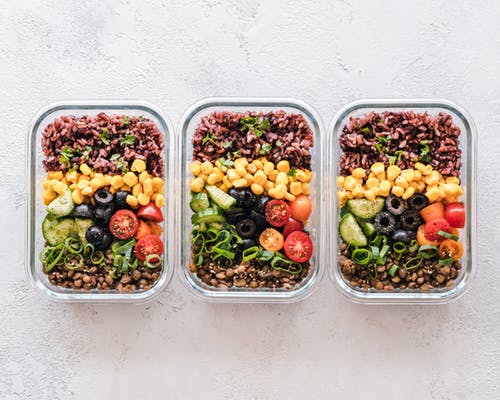
I find that the hardest time of day for me to eat a proper meal is lunch time. Days seem to be a blur with a newborn and sometimes snacking is all that gets accomplished. However, this leads to overeating and poor choices come dinnertime. I feel that variety is the key to avoid boredom with meal prepping. Some people like to put the same foods together for each meal, but I like to keep all the foods separate and then throw them together right before I eat them, that way I can slightly change up the ingredients or presentation each time. Below are the main staples that I have on hand to quickly put together a healthy lunch. Sometimes I make a salad, sometimes a sandwich, and other times I pop some of the ingredients in the microwave for a luxurious warm meal.
Meal Prepping Items:
- Grains
- Quinoa, farro, and whole wheat couscous last longer and stay fresher than rice
- Greens
- Spinach, arugula, and green leaf lettuce provide lots of nutrition, taste, and variety of use
- Roasted vegetables
- Roasting vegetables gives them more flavor and opportunity to add a variety of spices
- Baked chicken breasts or thighs
- Bake with different sauces to change things up*
- Canned tuna
- This can be used as a salad topper or used to make a sandwich
- Whole wheat bread
- The more fiber the better
* Be mindful of sauces and dressings, making sure they are low in fat and sugar.
As someone who is not a food planner, I can attest to the ease of this kind of “meal prepping.” Having these items on hand, really saves me from making bad decisions or from going without proper food during the day. Not only do I eat healthier, but I notice a difference in my energy level when I consume nutritious food throughout the day. In between meals, snacks can be incredibly helpful too, just make sure they are not packed with empty calories. I will leave you with some easy snack options that I reach for when I have a minute to spare. Remember, surrounding yourself with healthier food choices allows for healthier decisions.
Snacks:
- Mixed nuts or trail mix
- Hard-boiled eggs
- Apples
- Low-fat cheese
- Granola bars
- Brown rice cakes with peanut or almond butter
- For more articles with tips and tricks of healthy eating check out our Fill Your Plate Blog. For recipes that the whole family will enjoy check out our recipe section.
Is the Juice Worth the Squeeze?
By Erin Wyatt A Recent ASU Nutrition Student
Juicing fruits and vegetables is nothing new, in fact, it has been around since the 1930s. However, in the last few years, we have entered a new era of juicing, a juice craze if you will. It is apparent all over the internet with recipes that tempt the eyes, even more so than the stomach, and is very evident with the amount of “juiceries” popping up all over cities. In New York City, for example, you are never very far from one of these establishments, not unlike a Starbucks. Carrying around a green juice almost seems to be a fashion accessory, as celebrities are often photographed doing so. I must admit, I do feel cooler and healthier when I am toting around a bottle of the green stuff. However, am I healthier for drinking my fruits and vegetables? The short answer is no, it is better to eat your fruits and vegetables than to drink them. However, that doesn’t mean that juicing needs to be avoided. Let’s take a look at the pros and cons of juicing and what to keep in mind when consuming them.
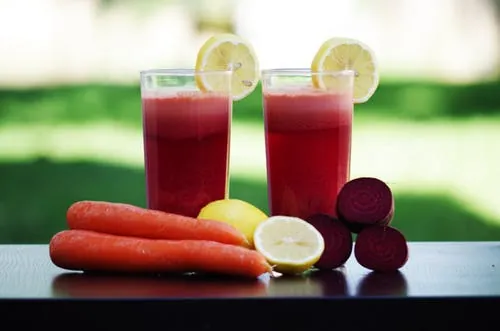
Pros
Juicing does provide many of the vitamins and minerals that our bodies need.1 Honestly, it is hard for most of us to get in our daily recommended amount of fruits and vegetables, which according to the USDA is 4-5 cups per day.2 Therefore, drinking a cup or so helps ensure that we are meeting this healthy criterion. Another plus is that these juices are very convenient, especially when we are particularly busy. It is much easier to down a bottle than try and eat a salad on the go. Also, they may prevent you from snacking on something that is less healthy when you need an afternoon boost. You would definitely feel better drinking a vegetable juice than grabbing candy from the vending machine. Lastly, if you are someone that does not like the taste of certain vegetables, these concoctions could be a great way for you incorporate them into your diet.1
- Provides vitamins and nutrients
- Helps achieve daily recommended amounts of fruits and vegetables
- Convenience
- Replaces unhealthy snacks
- Tastes good
Cons
The main problem with juicing is that it removes the skins and pulps, which in turn reduces the food’s dietary fiber.1 That dietary fiber helps your body process the sugars from the fruit and keeps you fuller longer.1 Another con of drinking your fruits and veggies is that you are sure to consume more sugar than you realize. Some companies add more fruits than vegetables to sweetened up their beverages. For people watching their sugar intake, this is an important aspect to look out for, especially without the fiber in place to slow down the sugar absorption. Another negative to juicing is the cost. If you are purchasing the store bought version, each bottle averages $10, which is an expensive snack. If you are juicing at home, the produce is cheaper but you have to buy large quantities to yield a small amount of juice, not to mention the time-consuming cleanup.
- No dietary fiber to keep you full
- Large quantities of sugar
- Expensive
- Lots of clean up
Bottoms Up
The juice craze doesn’t appear to be going away any time soon. While these beverages do provide some vitamins and nutrients, they are not as healthy as actually eating the whole food itself. However, it is a better alternative to most snacks and allows you to reach your daily recommended fruit and vegetable goals. Just be mindful of the amount of sugar per serving when choosing your drink of choice. One way to get the best of both worlds is to blend instead of juice. By putting the edible portions of the ingredients into a blender, you will be able to retain the fiber portions of the produce.1 Blending allows for more opportunities to get creative with additional healthy ingredients, such as nut butters and yogurt. Also, blenders are way easier to clean. Remember, however you get your fruits and vegetables, you are nutritionally fashionable!
Looking for more health-related articles? Check out our Fill Your Plate blog where we post 3 times a week. Looking for some recipes to make the whole family happy? Check out our recipe section.
References:
- Zeratsky, Katherine. (2016). Mayo Clinic. Nutrition and healthy eating: Is juicing healthier than eating whole fruits or vegetables? Retrieved from http://www.mayoclinic.org/healthy-lifestyle/nutrition-and-healthy-eating/expert-answers/juicing/faq-20058020
- United States Department of Agriculture. (2018). All about the vegetable group. Retrieved from https://www.choosemyplate.gov/vegetables
Energy Peanut Butter Balls
By: Stephen Gunner a Recent ASU Nutrition Student
Energy balls are often eaten by people before a workout because they help keep you full and energized. They are also full of health benefits like fiber, vitamins, and minerals. They are a great source of fiber, zinc, and vitamin B1. Peanut butter contains vitamin E which is an antioxidant that provides benefits to the skin. Several recipes for energy balls exist, but the ones that I am going to share with you are simple and cost-effective. Many college students enjoy making these because the ingredient cost little and may already be around the house. They are easily stored in the fridge in a container. This makes consumption easy and quick for people who are on the run!

Ingredients:
- ¾ cup honey
- 1 cup peanut butter
- 2 cups oats
- ½ cup coconut shavings
Steps:
1. Mix all the ingredients together in a bowl.
- Roll dough into individual balls
- Stick them in the fridge and wait 20 minutes before serving!
Very simple! The recipe can be personalized and ingredients can be exchanged. During the holidays, people like to add dark chocolate chips to the mixture. Some people even put in red and green M&Ms!
For more recipes that you will love check out our recipe section. For more fun articles like this check out our Fill Your Plate Blog.
Natures Medicine
By Alexandra Pettit
Not only is it a delicious spice but it has been praised for its medicinal uses for thousands of years: Cinnamon. Ceylon cinnamon is known as the true cinnamon however, the most commonly referred to cinnamon we use today is Cassia Cinnamon. Cinnamon is actually the innermost bark of the Cinnamomun Verum tree. When harvested the bark is peeled away from the tree and curl creating quills or more commonly known as cinnamon sticks. However, you can get cinnamon in many forms such as sticks, powder, capsules and many more ways.

Cinnamon is high in fiber and calcium which helps with Colon health. Fiber and calcium are essential to one’s diet to maintain or improve a healthy digestive system. Cinnamon also has powerful antioxidants that help with controlling blood sugar. It is used quite often with people struggle with diabetes and often take cinnamon capsules. Cinnamon is also a natural anti-inflammatory which can be a great natural alternative to many over the counter medicines.
Cinnamon is one of the oldest spices known to man, and for ages, it has been used for healing, trading, and cooking. If you’re looking for a natural alternative that is beneficial to the body I would highly recommend.
Here is an awesome recipe for cinnamon tea. This is a great way to start out one’s morning, with a cup that packs a healing punch that will keep you going through the whole day.
Cinnamon tea
- Add the cinnamon stick or ground cinnamon to a teapot
- Add boiling water
- Let steep for 8-10 minutes.
- Add any of your favorite tea
- The steep for 2-3 minutes
- Strain tea into your cup
- Add milk or sugar (optional)
Looking for more health-related articles? Check out our Fill Your Plate blog where we post 3 times a week. Looking for some recipes to make the whole family happy? Check out our recipe section.
Beans, Beans the Magical Fruit…
By Morgan Crawford a Recent ASU Nutrition Student
Beans and legumes have been a staple of many diets throughout the world for centuries. Some of the earliest crops were discovered in Thailand over 9,000 years ago. In Europe, bean harvests occurred much later. The term “bean” refers to an extremely large range of plants that belong to the Fabaceae or Leguminosae family that produce the seeds that we use for food. There is somewhat of a hierarchy of beans—the overarching species is known as the common bean. Just a few of these include string, field, French, and snap beans. Subspecies are those that most commonly come to mind when we think of beans and legumes—navy, pinto, kidney, fava beans, and lentils.

I was always confused about the differences between beans and legumes, and I’m sure I’m not alone in this conundrum. We tend to lump the two together and the names are often used interchangeably. Well, I am here to set the record straight and get to the bottom of the confusion.
Legumes bear fruit that grow in pods.
One surprising fact is that peanuts aren’t nuts at all! They belong to the legume family!
Beans are the seeds from a very large group of plants.
Something interesting about green beans is that they aren’t technically beans! They are classified as legumes!
For gardeners, beans and legumes are a perfect solution to small spaces. Unlike gourds, root vegetables, and fruits such as tomatoes, beans and legumes grow upward. Their vertical growth makes for great use of a smaller space. They are ideal for those who are working with a smaller home garden and want to grow to produce efficiently.
An up and coming theme in the health industry is sprouting. Of course, the process of sprouting is not a new concept, but the frequency has certainly increased in the last few years. While some might think it is a daunting process, it is actually quite easy to do. This website shares an easy step-by-step way to sprout!
It’s probably not a surprise that beans are a healthy addition to any diet. They have been eaten for thousands of years and are still an inexpensive and nutritious stable for people throughout the world. It is well known among vegetarians and vegans that beans are an excellent source of plant protein, and when combined with grains such as rice, form a complete protein that contains all nine essential amino acids. Beans have also been shown to regulate blood sugar due to their fiber content. Those with diabetes or who are pre-diabetic should increase their intake of beans in order to stabilize blood glucose levels.
Heart disease is another health issue that can actually be prevented and treated by diet changes. Lentils, a type of legume, contain magnesium which plays several roles in the body. A few of those are regulation of blood, nutrient, and oxygen flow. With low levels of magnesium, the body is at risk for heart disease, so make sure you’re eating plenty of beans and legumes!
Beans also contain a huge array of minerals and vitamins. Some of these include iron, B vitamins, copper, magnesium, manganese, zinc, and potassium.
As soon as it starts cooling down, I start thinking of all my favorite soup recipes. For as long as I can remember, my mom has made her famous chili recipe every year for Halloween. It is an inexpensive dish that takes minimal preparation and feeds a crowd. Over the years, I have made it countless times and have put my own twist on the original recipe. Next time you are looking for a warm, comforting dish, here is the recipe for you!
Chili Soup Recipe:
1 tbs. olive oil
Pinto beans 1- 15 oz. can (drained and rinsed)
Black beans 1- 15 oz. can
Kidney beans 1- 15 oz. can
Great Northern beans 1- 15 oz. can
1 large onion- diced
1 large carrot- diced
3 cloves garlic- crushed
1/2 cup frozen corn
1/2 packet taco seasoning mix (I use Trader Joe’s brand) *use less if you want a milder chili
Crushed tomatoes with juice 1 -28 oz. can
3 cups vegetable broth
Salt and Pepper to taste
Green onion for garnish
Directions:
Finely dice the onion, carrot, and garlic. Heat oil in a large pot. Sautee diced carrot and onion on medium heat until softened. Add crushed garlic and seasoning mix- cook for an additional 30 seconds. Add the beans once they have been drained and rinsed. Pour in vegetable broth, tomatoes, and corn. Add salt and pepper. Cook on medium-high heat until chili comes to a slow boil. Turn temperature down to medium low and let simmer for 20 minutes. Garnish with finely chopped green onion and serve!
For more fun articles like this check out the Fill Your Plate Blog. Looking for some fun recipes to try for the family check out our recipe section.
How to Eat Healthy in an Airport
By Erin Wyatt A Recent ASU Nutrition Student
With the next long holiday weekend approaching in May, you may find yourself in an airport. Therefore, you are more than likely to find yourself delayed in an airport. Chances are, you will need to eat at some point. If you had the forethought, or the time, to pack nutritious snacks, I applaud you. If you did not, I am here to help. It is not always easy to eat healthy in an airport, but you can make the best out of any situation. Whether your choices are a restaurant, fast food, or a newsstand, there are tricks to finding the best food options for you and your family.

Airport Restaurants
If you have a lot of time to kill, you may prefer to sit down at one of the restaurants or bars to have a meal. This will provide you with the greatest variety of options, but also the greatest temptations. Try and stick to the starters and salads portion of the menu or share an entrée if you can. Steer clear of fried items and look for lean protein to fill you up while keeping you comfortable during your journey. Below are a variety of choices that you may see on a typical restaurant menu.
Best choices:
- Hummus appetizer
- Guacamole appetizer
- Salad with grilled chicken or fish
- Turkey burger w/ a salad (instead of French fries)
Worst choices:
- Jalapeno poppers
- Fried chicken wings
- French fries
- Fried chicken sandwich
- Macaroni and cheese
Fast Food
Eating healthy at a fast food restaurant is no easy task, but sometimes it is the only option available. Some establishments have started including healthier items on the menus, but these foods are not as prominently displayed on their signs and advertising. Therefore, you need to do a bit of searching before placing your order. Some locations make the calories known, use this to your advantage when you can, as certain items that you think might be healthy can pack in some sneaky calories. The same rules apply here as with the restaurants, choose low fat and try and ignore the fried items. Be mindful of all of the extras that come on sandwiches and salads, like heavy sauces, bacon, and cheeses. You may be thinking, what’s left? Check out the best and worst offenders at typical fast food restaurants below.
Best choices:
- Grilled chicken wraps
- Roasted turkey sandwiches
- Soups
- Salads with lean meats and low-fat dressings
- Baked potato with sour cream
- Fruit
Worst choices:
- Double bacon cheeseburger
- French fries
- Nachos
- Fried chicken strips
- Milkshakes
Newsstands
Certain terminals are more bare bones than others or perhaps you only have 5 minutes until boarding, enter the newsstand. These seemingly unappetizing kiosks have more healthy options than you think. Look past all of the tempting candy and choose snacks that will provide more staying power with fiber and protein. Be mindful when reaching for protein bars, as some are full of unnecessary sugars. Feel free to grab a few extra to bring with you on the flight instead of having to resort to in-flight snacks. Below are some of the best and worst choices at the newsstand.
Best choices:
- Popcorn
- Nuts
- Granola bars
- Fruit
- Yogurt
Worst choices:
- Candy
- Soda
- Chips
- Baked goods
Travel Smart
So next time you are stranded in an airport, have no fear, healthy food can be found. Whether you have time for a restaurant, stuck with fast food, or need to pop by a newsstand, you do not need to go hungry. Stay away from the fried stuff and sugar and opt for lean meats and vegetables. Also, keep hydrated with plenty of water. This will ensure a comfortable journey. Hopefully, these general guidelines will serve you well when you have some tough food decisions to make. Bon Voyage!
Editor’s Note: Watch for an article with advice on meal planning for potential airport delays.
For more articles like this check out our Fill Your Plate Blog. Check out the Farmers Market page to find some of these snacks when you’re not traveling.
What’s in season? Eggplant
Erika Guzman A Recent ASU Nutrition Student
When vegetables are in season, it usually means it’s very tasty and it’s cheap! This season, it’s eggplant! Although the large purple vegetables very common around the states, there are also other types and species. Most of them contain the same spongy texture, and it’s a great alternative to mushrooms.
Eggplant is one of the most economically important crops as well as one of the healthiest vegetables for it’s low caloric value and it’s high content of vitamins and minerals. In eggplants, there are anthocyanins, or the violet hues in eggplant which can actually protect the heart! In short it functions as antioxidants and anti-inflammatory compounds in the body. Anthocyanins are associated with flavonoids, and they have the ability to protect against diseases. Naturally pigmented fruits and vegetables usually help with heart health and cardiovascular health. With eggplants, they contain a chemical called nasunin, which may help improve blood flow to the brain, allowing your cognitive to function more clearly and properly.
Lastly, eggplant is great for weight management. It is high in dietary fibers for a vegetable and it’s low in calories which allows your stomach to feel more satisfied and reduce your appetite overall.
Nutrition facts
| Amount Per 100 grams |
| Calories 25 |
| % Daily Value* | |
| Total Fat 0.2 g | 0% |
| Saturated fat 0 g | 0% |
| Polyunsaturated fat 0.1 g | |
| Monounsaturated fat 0 g | |
| Cholesterol 0 mg | 0% |
| Sodium 2 mg | 0% |
| Potassium 229 mg | 6% |
| Total Carbohydrate 6 g | 2% |
| Dietary fiber 3 g | 12% |
| Sugar 3.5 g | |
| Protein 1 g | 2% |
| Vitamin A | 0% | Vitamin C | 3% |
| Calcium | 0% | Iron | 1% |
| Vitamin D | 0% | Vitamin B-6 | 5% |
| Vitamin B-12 | 0% | Magnesium | 3%
|
Although eggplants can be beneficial to many people, it can also cause problems. The eggplant is part of the nightshade family; it may aggravate arthritis or inflammation due to the alkaloids in the vegetable, or the natural chemical compound that are also commonly used in morphine or poisons. Fortunately, it’s not severe, but it may cause problems and pain for those who suffer problems with their joints.
Another plausible problem is with overconsumption of eggplants, it can contribute to problems with the gut and kidneys. Too much eggplant can cause oxalates in the kidneys, or where kidney stones are formed from calcium deposits and too much sodium. People who are prone to kidney problems should limit their intake of the vegetable, as well as some common ones in the same family. Lastly, it absorbs iron. Unless if you happen to have too much iron, it should also be limited, so people who suffer from anemia, limit your intake as well.
Overall, eggplants are healthy and delicious. They’re loaded with nutrients and have a very low calorie content, and it can be beneficial. It’s an extremely economical vegetable as well as healthy, and when in season, it’s tasty and even cheaper.

References
Norris, J. (2013). Oxalate. Vegan Health. Website. Retrieved at https://veganhealth.org/oxalate/.
Taher, D., Solber, S. O., Prohens, J., Chou, Y., Rakha, M., & Wu, T. (2017). World vegetable
center eggplant collection: origin, composition, seed dissemination and utilization in
breeding. Frontiers in Plant Science. 8:1484. Retrieved at
https://www.ncbi.nlm.nih.gov/pmc/articles/PMC5609569/.
Ware, M., RDN LD. (2017). Eggplant health benefits and tasty tips. Medical News Today.
Website. Retrieved at https://www.medicalnewstoday.com/articles/279359.php.
For more awesome recipes be sure to check out the Fill Your Plate recipe section.
The Mighty Chickpea
By Morgan Crawford a Recent ASU Nutrition Student
I stumbled upon this recipe several years ago while scrolling through Pinterest. I wanted something that was quick and easy to throw together. That is when I found a recipe for chickpea salad that truly changed my life. I’m not kidding; I have made it so many times that I’ve lost count. It has quickly become the requested dish at every dinner party or pot luck.
Over the years, I have made my own changes to it and altered the original recipe to fit what is in season or what I have in my fridge. That is one beautiful thing about this salad; it can be changed to fit your liking. If you’re looking for a quick recipe that is packed full of protein and veggies, try it out yourself! I promise, you will want to make a huge batch and keep in on hand for a quick and easy lunch, snack, or side dish. You can also check out the original recipe here.
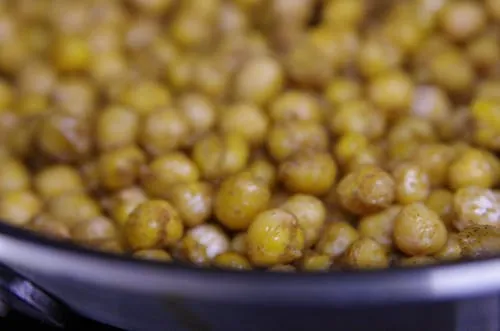
Ingredients:
- 2 cans chickpeas- make sure to drain and rinse thoroughly
- 2 stalks celery- finely chopped
- 2 carrots- shredded or finely chopped
- 1 large apple- finely chopped
- 1 cup spinach- finely chopped
- 1 green onion- finely chopped
- 3-4 tablespoons Dijon mustard (use more if you want more spice)
- Juice of 1 lemon
- 2-3 tablespoons toasted sunflower seeds
- salt and pepper to taste
Directions:
- Drain and rinse chickpeas and place in a large bowl.
- Using a potato masher or fork, mash chickpeas (you still want them to have some texture, not mashed to a paste).
- Chop your vegetables and add to the bowl.
- Add mustard, lemon juice, sunflower seeds, salt and pepper.
- Mix together and adjust seasoning if desired.
- Serve room temperature or chilled.
This salad is not only delicious, it is also packed with nutrients. Chickpeas, also known as Garbanzo beans, are part of the legume family. They are high in fiber, which makes them an excellent addition to anyone’s diet, especially those who are diabetic or pre-diabetic. Fiber intake is shown to regulate blood sugar, which can prevent or even treat type II diabetes. Bone health is also impacted by our diet, specifically how much calcium, magnesium, iron, and phosphate we consume. Chickpeas contain all of these vital nutrients.
Just like pinto or black beans, chickpeas come either canned or dried. Most people probably find that purchasing canned beans is not only the easier option, but also must faster. If using dried chickpeas, you must soak them in cool water for at least 8-12 hours. They are then cooked on the stove for another 2-3 hours. Though this is a time-consuming process, there are certainly some benefits to doing it this way. First, it eliminates the unnecessary salt and other preservatives that are often added to canned beans. Something not so obvious, is that the soaking process increases digestibility. Chickpeas and other beans have sugars that are present on their outer surface; if beans are not soaked before the cooking process, the sugars are not broken down. This means that they are not digested in the small intestine and pass along to the large intestine where bacteria consume them and produce gas. It is common for digestive discomfort to result from this. To prevent this, it is important to soak and rinse beans before cooking.
Chickpeas, as well as other varieties of beans, are a great protein source, and when combined with a carbohydrate such as rice or quinoa, are a complete protein. This mean it provides the body with all the essential amino acids, perfect for those eating a plant-based diet.
An interesting development in the food community recently, is the discovery of aquafaba, the jelly-like liquid that comes from canned chickpeas. For the longest time, we were told to drain and rinse canned chickpeas before cooking, but now we see that there are actually quite a few uses for this strange byproduct. It can also be used to make egg-less mayonnaise and many more dishes that would otherwise require eggs. The discovery of aquafaba has opened up so many opportunities for delicious recipes. It really is the perfect ingredient; it eliminates waste, costs just pennies, and is completely plant-based.
Chickpeas offer a wide variety of nutrients and are a versatile ingredient that can be added to any dish for some extra protein. From a delicious salad to using aquafaba to make meringue, the possibilities are endless. Try adding more of these nutrient packed beans to your life!
For more articles about clean eating check out the Fill Your Plate Blog. For some more recipes like this one check out the recipe section of our website.

